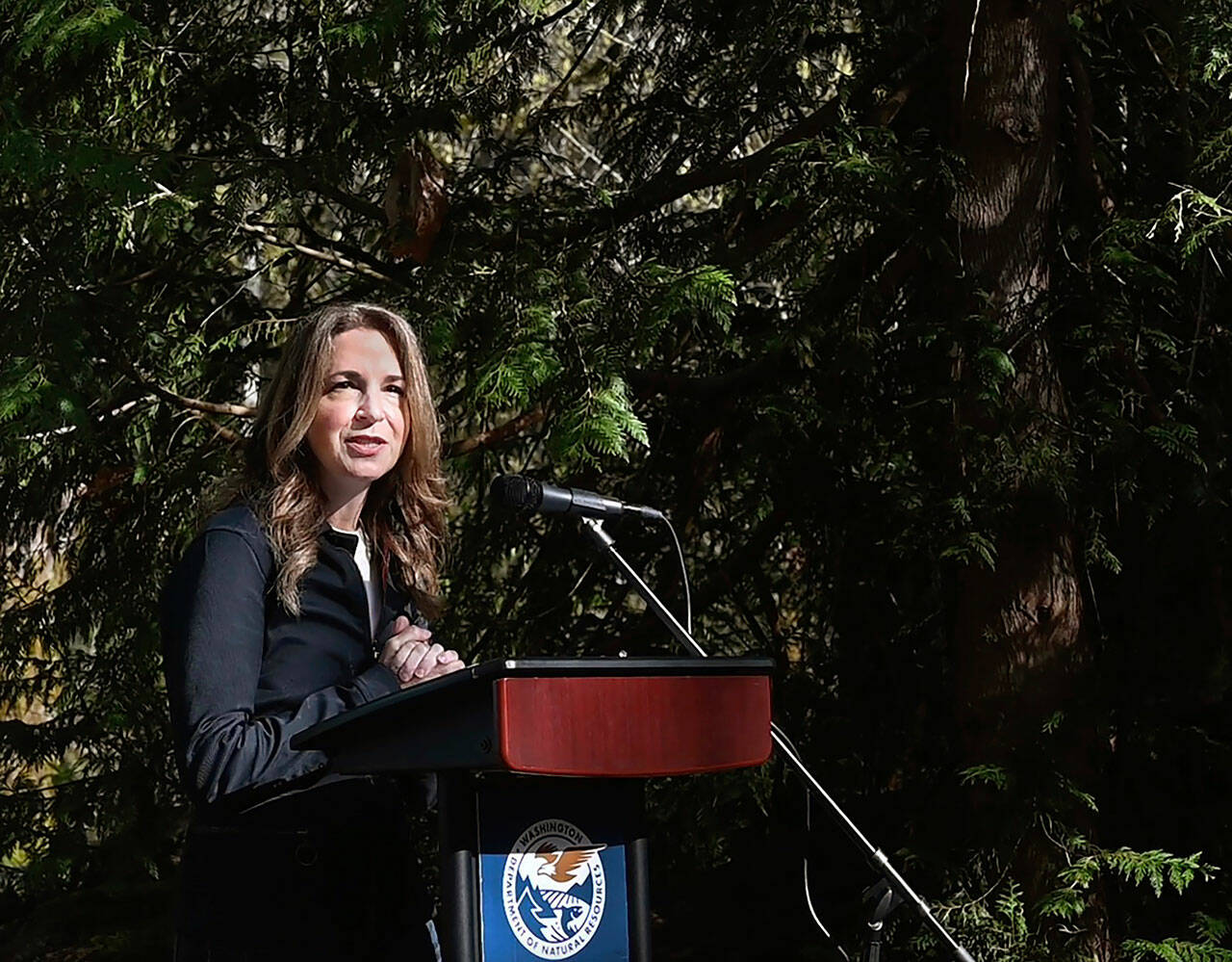By The Herald Editorial Board
It’s not that the value of preserving forests as a method of combating climate change — as trees gobble up carbon dioxide and release oxygen — wasn’t already understood, but now because of a new state Department of Natural Resources program, there’s an opportunity to make some money from trees that doesn’t involve cutting them down.
Last week, the DNR and Public Lands Commissioner Hilary Franz announced a new program that over the next decade will protect about 10,000 acres of ecologically valuable forestland in four Western Washington counties, leasing the land and selling carbon offset credits to industries that release carbon dioxide and other greenhouse gases that are a direct cause of climate change.
The concept of carbon pricing and selling offsets, while relatively new, has a range of supporters, including environmental groups, industries and economic advisers who see it as a way of making up for the impacts of greenhouse gases by incentivizing the preservation and production of strategies to reach “net zero” carbon emissions. The concept is the basis of the state’s cap-and-invest program — the Climate Commitment Act — adopted last year.
Franz and the DNR have set up a program that essentially gets an oil refinery, for example, to pay to leave a forest standing to do its work for the climate and fund schools and more at the same time.
The program is expected to generate more than 900,000 carbon credits to be auctioned off, equivalent to offsetting more than 2 billion miles driven by gas-powered cars, a DNR release said. For the program’s first phase, 3,750 acres have been set aside, including 2,500 of forestland previously identified for timber harvest in Whatcom, Thurston, Grays Harbor and King counties. The balance, 1,250 acres, had already been protected from logging by existing DNR policies.
But what’s spared from the chain saws won’t mean that local schools, hospitals and libraries that have benefited from about $180 million annually in timber sales will go without. The DNR said the leases for carbon sequestration and storage are expected to generate lease payments that are similar in value to what timber sales provide.
“Our forests are the most renewable resources we have,” Franz said at a trailhead at the Capitol State Forest near Olympia last week, announcing the program. “The carbon credits generated from these leased lands will support local budgets for education and essential services to the tune of tens of millions of dollars. The trees that are cleaning the air and the water in our community will now also help fund its schools and libraries.”
The project has drawn criticism, particularly from the forestry industry. The American Forest Resource Council’s president, Travis Joseph, in a release last week, called the DNR program the “same failed approach of the last 30 years under a new name: walking away from our forests,” noting the cumulative impacts on the state’s timber and lumber mill industries from losses to insects, disease and wildfire that are already cutting into harvests and supply.
The council also defended the industry’s own contributions to addressing climate change. A University of Washington study that examined the carbon mitigation from the wood products industry found that while the production of wood and paper products emit greenhouse gases, the harvesting and replanting of trees stores more carbon in wood products than what is emitted and has reduced the state’s carbon footprint by 12 percent.
However, the 10,000-acre set-aside over the next decade amounts to a pilot project, allowing an opportunity to consider the goals of the program and its environmental and economic impacts if the program is considered for expansion in the future. In total, the DNR manages about 2.4 million acres of forested state trust land for long-term timber production, habitat protection and watershed preservation. About 840,000 acres of forestland is currently managed for conservation; another 130,000 acres of forestland are protected as natural areas, still leaving significant acreage for sustainable timber production.
The DNR is using several criteria to identify acreage for the carbon-offset program, with the remaining 6,250 acres to be selected within the next year. The program is putting a priority on areas with significant concentrations of biodiversity and landscape-scale ecosystems; the presence of rare, threatened or endangered species and their habitats; critical areas, such as those needed for watershed protection and erosion control; and areas critical to the needs and cultural identity of tribes and local communities. It’s likely that many of those factors would have made timber harvest inadvisable in some areas even without the carbon-offset program.
And those same criteria should also lead the program to prioritize those areas already under conservation protection, reserving adequate acreage for sustainable forestry production.
Franz, as chief of the Department of Natural Resources, successfully urged the Legislature last year to make a record investment in the department’s ability to fight wildfires, but also to prevent fires and improve the health and resilience of the state-managed forests and wildlands, including $125 million last year and this year and another $328 million by 2027.
And innovations, such as the Darrington Wood Innovation Center, now under development, also show the possibilities for addressing climate change while supporting jobs in timber communities. The Darrington center is expected to support 120 jobs to produce cross-laminated timber, a product with two climate benefits: It uses wood from the thinning of forests, rather than from clear-cuts and stores more carbon, lasts longer and has more uses — such in high-rise buildings — than traditional lumber and other more carbon-intensive building materials.
The DNR’s and Franz’s carbon-offset program is a continuation of that innovation that puts a resource to use while preserving it.
Talk to us
> Give us your news tips.
> Send us a letter to the editor.
> More Herald contact information.

























